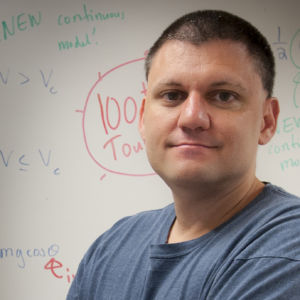About This Episode
Tiger Woods. Phil Mickelson. 18 Holes. 9 million dollars. Two of the most dominant golfers in the past two decades face off against each other for ultimate bragging rights in their rivalry. How does the brain function in a high-pressure situation like this? Does the course favor a certain golfer? On this episode of Playing with Science, hosts Gary O’Reilly and Chuck Nice team up with neuroscientist and StarTalk All-Stars host Heather Berlin and sports physicist “The Good Professor” John Eric Goff to investigate the science behind this epic match, both physical and mental.
Find out what drives someone, like Tiger and Phil, to compete in an event like this if money isn’t the main objective. We ponder whether prize money can have a negative or positive mental impact on athletes. You’ll learn why golf is more mentally taxing than team sports. Heather explains how the focus of attention differentiates between individual and team sports. We discuss what golfers can do in order to get into a mental state of calm and focus. How can an athlete sustain a mind state like that for hours at a time? We go inside the brain and learn how certain areas function in unison to move a golf shot from the visualization state to the physical execution. Explore why the time between holes and between shots, or as Gary calls it “empty space,” is the time when golfers are the most mentally vulnerable. You’ll hear why the prize amount for this match is 9 million dollars instead of an even 10.
Next, we dive into the physics happening on the golf course. Eric gives us a breakdown of the Shadow Creek Golf Club, the event site for this showdown. You’ll hear why Phil might have the advantage on the front 9 and Tiger might have the advantage on the back 9. Learn more about the science of the slice as Eric tells us how the magnus effect impacts the golf ball coming off the club face. We dive into the statistics for both golfers and Heather reminds us that, even taking statistics into account, the human element is always unpredictable. Discover if there are any environmental factors that will impact the match. Eric explains why this course differs from the usual golfing spectacle we see weekly on the PGA Tour. All that, plus, Eric tells us the hole he’s most excited about and Heather explains how “disassociation of behavior” can lead to success on the course.
NOTE: All-Access subscribers can watch or listen to this entire episode commercial-free here: Tiger vs Phil – 18 Holes, $9 Mil.




 Unlock with Patreon
Unlock with Patreon



 Become a Patron
Become a Patron

